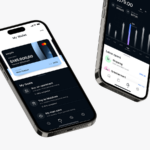Custom ERP Software Development for Businesses: Step-by-Step
Apart from lack of capital, poor management is the most common reason businesses fail. In fact, a survey by the Small Business Administration shows that 30% of small businesses fail within the first two years due to inefficient systems and poor management planning. That is why resource planning is an integral part of running any enterprise; it doesn’t matter if you are a small or large startup or unicorn. ERP solutions have long been developed and designed to regulate and optimize processes that impact enterprise performance. From human capital management to operating costs, a custom ERP software is a clever way to keep things under control.
So, today we will uncover the two most desired questions regarding what ERP stands for and why your business needs it? Learn more about the benefits and the steps you need to take when going for Custom software development for Business!
1. What Is ERP Software Development
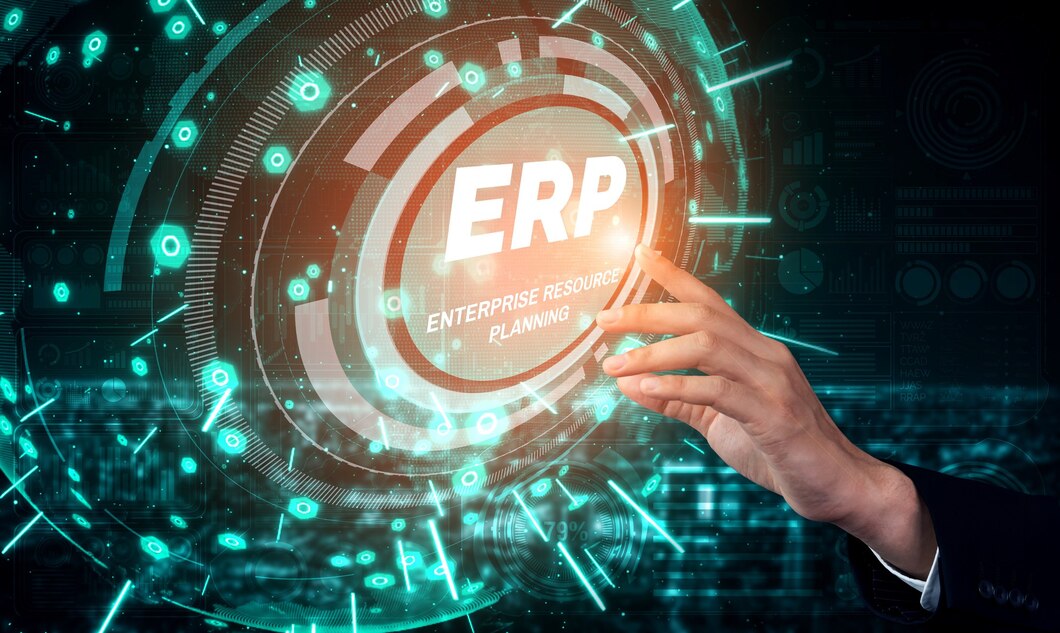
First, we need to clarify the meaning of enterprise resource planning (ERP). A custom ERP software handles the management of main business processes in real-time, which collect, store, manage, and interpret information from various business activities to staff information. In some sense, ERP software can be viewed as a mediator, a bridge connecting all core business processes.
This software can be a web-based or mobile app that integrates features designed to manage specific operational processes. Although you can buy off-the-shelf ERP solutions such as SAP or NetSuite, most enterprises instead opt to build their own custom ERP system from scratch for better customization and ownership.
ERP stores information gathered from different departments in a central database. That means employees from a specific department can access information that is allowed only to their department. On the other hand, ERP software specialists that manage all business processes can access the information from every department.
2. The Pros Of Custom ERP Software Development
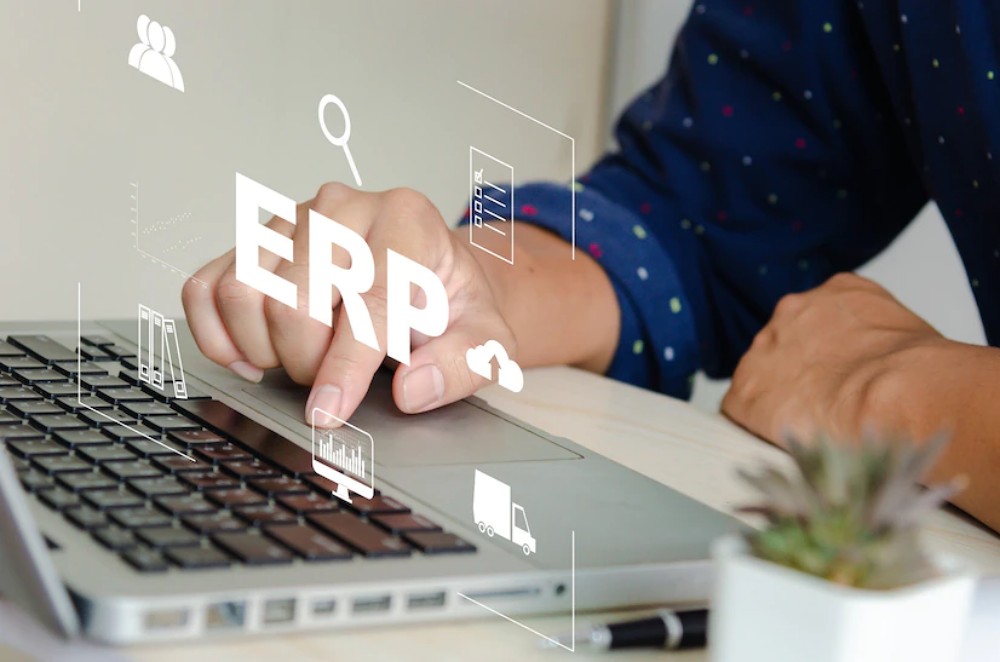
If you are still asking how practical such systems are for different business areas? Simply put, ERP software facilitates enterprise workflows by optimizing the major processes, and every company requires industry-specific ERP functionality, things that pre-built ERP software don’t always cater to.
Here are some of the ERP features and benefits of custom ERP software development:
- Dedicated modules: Custom ERP software development can create different ERP modules designed for your company’s specific department. Employees from each department won’t be confused with many features and information used by other departments. Besides, the encapsulation of processes grants safety and mitigates data leakage risks.
In short, every department can only access the specific modules they need for their work with ease.
- Easy-to-learn: It’s easier to explain and guide through something designed exclusively for your company than for a mass market. With proper documentation from developers, the employee training process will go faster and more smoothly.
- Easy-to-maintain: When some bugs appear in third-party software, you will have to contact a support team or simply wait a certain amount of time for the service provider to resolve the issue. With custom software development, your developers know all the system’s ins and outs, peculiarities, and can identify as well as fix bugs in no time.
- Flexibility: The main drawback of third-party software is that you need to adapt to it. Even though the market offers a wide range of solutions, they can’t fit every company’s needs 100%. Every business has its own USP (Unique Selling Points) and POD (Points of difference). Only a custom ERP solution can solve all your problems. With ERP software development, the product is designed specifically for your company, so you don’t have to restructure it for a third-party application.
In short, your company won’t have to change its operational processes to better fit an uncustomized management system.
Looking For a Dedicated Team?
A Dedicated Team might be the best solution in your case. Get in touch with us and we’ll help you choose the best IT outsourcing models based on your business needs and requirements.
3. The Cons Of Custom ERP Software Development
Even though ERP system development is an excellent investment in the long run, everything has its price. And here are a few main cons of Custom ERP Software Development:
- Price: This is what keeps the majority of entrepreneurs/business owners away from ERP software development. Since it’s often cheaper at the start to stick to third-party solutions that use a subscription model. However, with ERP software development services, you’re paying not only for an application but also for its flexibility and convenience. That often leads to a reduction in operating expenses. According to a study by Gartner, the average cost of a custom ERP implementation can range from $500,000 to $5 million or more. Additionally, understanding the differences between ERP vs. ERM (Enterprise Risk Management) can also impact your overall strategy and investment.
- Development time: ERP application development requires you to invest a lot of time depending on your business’ complexity. Software engineers need time to create business logic, draw up the design, and test each layer.
- Finding the right partner: Last but not least is a trusted tech partner. The process of hiring a reliable software development company may take months. So, if you have strict time frames, maybe third-party solutions might be the right option to go for.
Interestingly, studies indicate that around 65% of ERP implementations fail to meet their initial objectives, underscoring the significance of customized solutions and proper planning.
4. ERP Software Development Process
Custom ERP software development is a complex process with many variables, requiring a close vision of the development strategy. That’s why developers need a lot of time to design navigation systems and all restrictions for each user group. Here’s a short guide to give you a fuller picture.
4.1. Discovery Phase
Start by setting expectations. You have to clearly define the idea and goals you wish to pursue. Developers can’t work on the project if they don’t have precise requirements. Savvycom has been working with businesses around the globe for over a decade, designing top-notch ERP solutions that scale with business growth. We first help the clients draw up a feature list and make a rough software project estimation during the initial contact.
As for your part, you should be able to explain your company’s internal structure to give our developers a better understanding of the software structure. Additionally, all processes involved in the ERP system should be described in detail.
If you are still having doubts, answering these questions might assist you:
- What business problems will the process help solve as a result?
- Do you have experience, or should you hire a third-party development team?
4.2. UI/UX Design
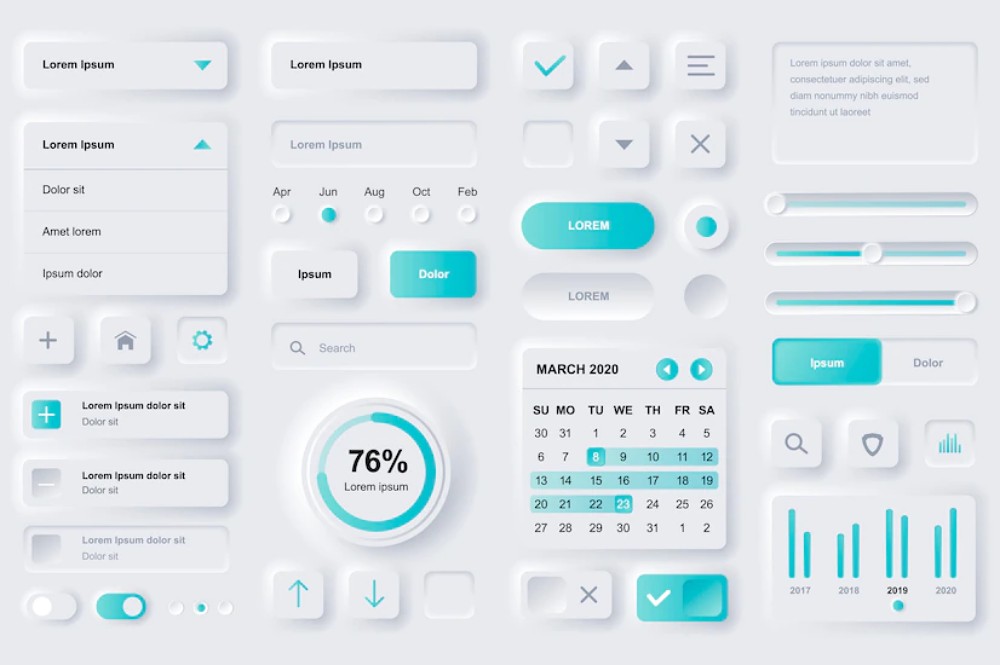
Design is one of the top concerns regarding ERP development as this software has a lot of user roles, navigation elements, charts, and other interactive components for different departments. The designer’s task is to combine all elements and user roles so that the user can seamlessly navigate between all screens.
At this stage, properly designed wireframes mean a lot. Wireframes are a general app scheme that displays how future components will be placed on the screen. You will need to approve this scheme with designers and business analysts and decide what should be added and left out.
However, the layout isn’t the only thing that matters. Properly matched color schemes, fonts, buttons, and other minor details make the final version more attractive and easy to use. So, when searching for a tech partner, ensure they provide quality UI/UX design services.
4.3. Tech Stack For ERP Development
To implement the architecture, our engineers use various technologies and development approaches. The tech stack they use depends on the chosen ERP platforms. Thus, our developers will use C++/C# for Windows or Swift/Objective-C for macOS if the ERP system is focused on desktop platforms.
The tech stack includes Angular, Bootstrap, JavaScript, Node.js, and ERP frameworks like jQuery for a web-based project that provides more flexibility. Including all technologies on the list is challenging because the final stack depends on features and project requirements.
Hosting
You can host an ERP system in the cloud or your local server. Most enterprises select the first option because the cloud ERP is considered more secure and doesn’t require you to do constant in-house maintenance.
Front-end

- HTML is the main building block that structures web content into sections, paragraphs, images, headings, links, and other blocks.
- CSS is a style sheet language that describes how web content looks on a website. With this tool, a developer can define the text’s color, size, font, spaces between paragraphs, background color or design, images, table sizes, and other web page aspects.
- JavaScript creates additional user interface elements such as sliders, interactive maps, calculators, and 2D and 3D animations.
- React.js is a JavaScript library for developing dynamic and interactive user interface elements. Developers can use this library to design the user interface of a single page or a whole mobile app. Its goal is to provide high speed, simplicity, and scalability of front-end development.
- Angular.js is a great JavaScript framework backed by Google for building responsive and dynamic single-page applications.
- Vue.js is a progressive JavaScript framework for building user interfaces and complex single-page applications.
Back-end
- .NET is a platform for creating high-quality, cross-platform, high-performance, and secure software; It allows you to use multiple languages (C#, F#, VB, etc.), editors, and libraries to create enterprise server applications running on Windows Server and Linux or large-scale cloud microservices.
- Java is a language for programming the server-side.
- Python is a high-level programming language sometimes used to develop server-side solutions.
Database
Usually, you have to choose between relational and non-relational databases. And your choice will determine how your system organizes and uses data. Relational/SQL databases are better suited for small companies with a demand for standardization. NoSQL or non-relational databases likely better fit complex data infrastructures because they allow data storage in various easily manageable formats like JSON files.
-
- MSSQL is a popular management system from Microsoft for data storage and administration.
- PostgreSQL is an object-relational database management system that is used in custom solutions.
- Oracle SQL is one of the best alternatives to enterprise database management applications;
- MongoDB is an open-source, document-oriented NoSQL database management system that uses an unstructured query language.
- Azure CosmosDB: similar to MongoDB and SQL, easily supports ACID transactions but does not use a relational data model.
4.4. Integrations
During the workflow, companies often use various third-party products. Services like G Suite, Office 365, FreshBooks, and others should be combined with the ERP system. And with the help of APIs provided by the third-party software, our ERP software developers can access the information, collect and display it in the ERP system. This offers more business-related information to your employees, so the ERP system becomes more versatile and multi-functional.
Sometimes third-party integrations can replace large modules in ERP software development. For instance, CRM (Customer relationship management) is a system that helps the sales department to track points of entry, lead quality, sales pipeline, and so on. It may be too expensive for small and mid-sized companies to build this ERP module from scratch. Integration with third-party software like Hubspot or Salesforce lets companies save money and time on building the module and transferring all data from the previous database.
4.5. Test Your ERP Implementation

Once you’ve transferred all your data to a single resource planning system, it’s time to start testing. There are several processes you should consider, including:
- Review whether the system matches the initial security, integration, and functionality requirements you came up with in the first phase.
- Test the ERP’s functionality by performing accounting or sales operations across different modules. Calculate the accuracy of the results that the system returns.
- Employ focus groups to test dedicated modules.
- We recommend integrating dynamic security testing with Web Application Firewalls (WAFs). This will allow you to track and respond to vulnerabilities as they emerge.
In short, our engineers will conduct unit testing to see how new features work with other software modules. On the other hand, system testing validates a final, integrated version of the product to check the compliance of the ERP Development with initial requirements.
5. The Cost of ERP Software Development

Obviously, there’s no such thing as a one-size-fits-all ERP. The costs of ERP development can range from $20,000 to $250,000 depending on the number of departments using the system and the functionalities the ERP system will deliver. Small businesses pay substantially less than large enterprises because the latter requires many more users and a broader set of features. First, let’s look at what expenses you should be ready for building a custom ERP.
-
Expense Category Description Estimated Cost Range Development and Integration – Team includes developers, designers, software testers, project managers, and business analysts.
– Highest expense due to software complexity.
– May require hardware/cloud upgrades.
Varies based on complexity and team size. User Manual – Adapting to new workflows takes time.
– Employees may be less effective initially as they learn to use the software.
Included in overall development cost. Making Internal Adjustments – Internal processes may need updating to align with ERP standards.
– Requires managerial time, increasing overall development costs.
Adds to overall development cost. Maintenance – Hardware/network components may fail; replacements are necessary.
– Monitoring and support are needed, especially for cloud-based systems.
Varies based on infrastructure. Upgrades – Regular updates are necessary to keep up with competitors and ensure sustainable progress. Included in overall maintenance costs. Cost for SMBs – Small businesses usually pay significantly less than large enterprises.
– MVP ERP software development cost ranges from $10,000 to $50,000.
$10,000 to $50,000 Cost for Large Enterprises – Software development costs for complex ERP systems with more than 100 users range from $100,000 to $250,000. $100,000 to $250,000
Have a Project Idea in Mind?
Get in touch with Savvycom’s experts for a free consultation. We’ll help you decide on next steps, explain how the development process is organized, and provide you with a free project estimate.
6. How Can Savvycom Help You?
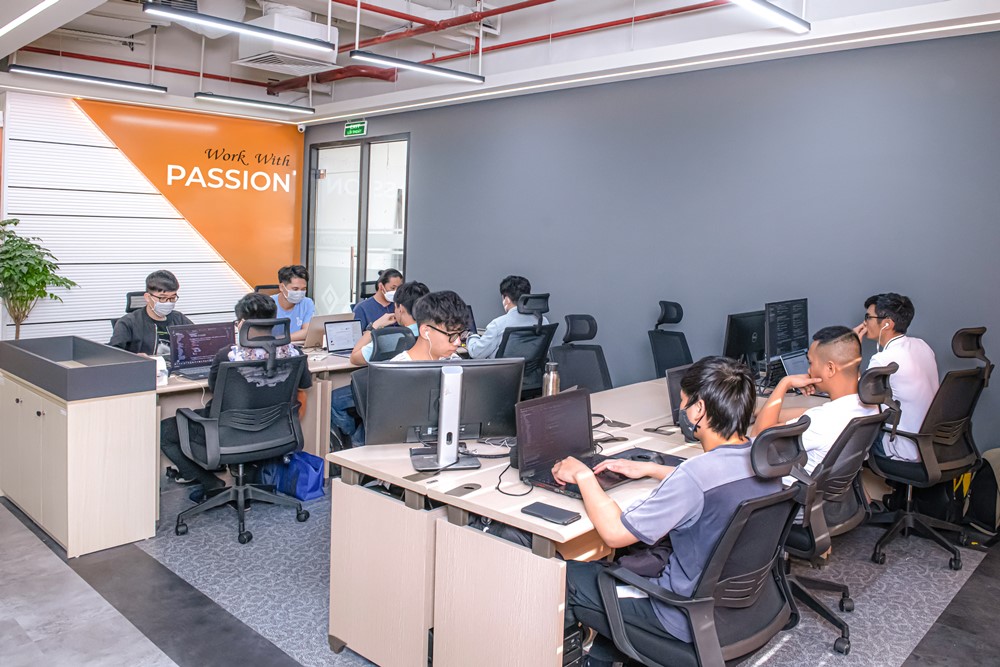
ERP development companies like Savvycom are not just your service providers – we are your partners. And in terms of ERP development outsourcing, Vietnam is one of the best spots to go. The country’s solid tech expertise is paired with globally competitive developer rates and many reliable providers. Check out our services to get more examples of our work.
Savvycom – Your Trusted Tech Partner
From Tech Consulting, End-to-End Product Development to IT Outsourcing Services! Since 2009, Savvycom has been harnessing the power of Digital Technologies that support business’ growth across the variety of industries. We can help you to build high-quality software solutions and products as well as deliver a wide range of related professional services.
Savvycom is right where you need. Contact us now for further consultation:
- Phone: +84 24 3202 9222
- Hotline: +84 352 287 866 (VN)
- Email: [email protected]

